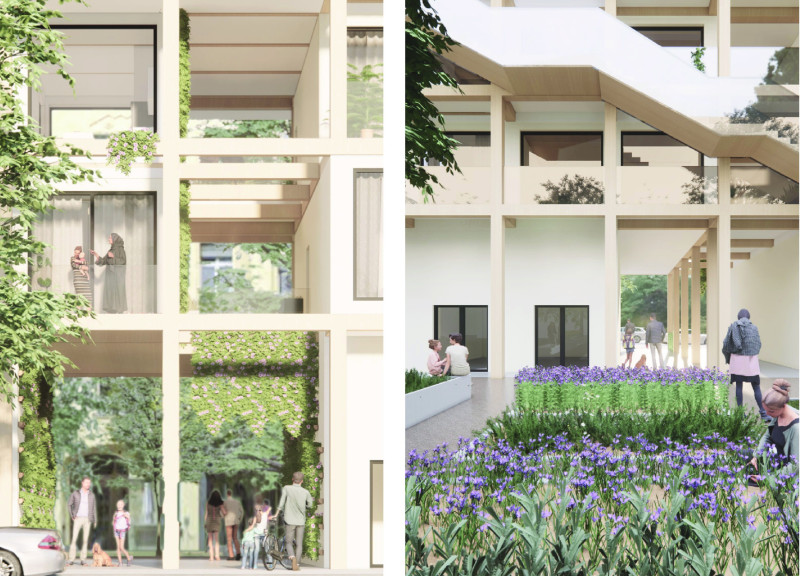5 key facts about this project
The project "REFUGE(E) WITHIN COMMUNITY" is located in Berlin's Charlottenburg neighborhood. It aims to integrate refugee populations into the local community through affordable and permanent housing. The design views housing as more than just a physical structure; it creates a space that encourages social interaction and a sense of belonging. The focus is on fostering connections among residents, helping them feel at home in their new environment.
Design Concept
The design centers around the idea that daily interactions are vital for building community ties. It includes shared spaces for activities like studying, gardening, and socializing, inviting residents to engage with one another. This approach encourages residents to establish relationships and combat the isolation often felt by those new to the area.
Spatial Integration
The project takes advantage of gaps in the urban landscape, particularly underused courtyards, to enhance the overall environment. By revitalizing these spaces, it provides not only housing but also vibrant community areas where refugees and local residents can meet. The layout promotes easy movement with circulation paths and communal corridors, facilitating spontaneous interactions among neighbors.
Materiality
Locally sourced timber is a key material choice in the design, aligning with sustainable building practices. It brings warmth to the housing while maintaining structural integrity. Using timber also supports environmental goals, as it helps reduce the carbon footprint of the project and fosters a connection between people and their surroundings.
Community Engagement
Beyond providing housing, the design aims to create a collaborative environment where residents can share skills and cultural insights. Thoughtful spaces are designed to encourage interaction between diverse groups, promoting understanding and enriching community life. This approach transforms the experience of displacement into a shared journey, ultimately fostering an inclusive urban setting.
At the heart of the design, community learning spaces serve as important areas for residents to gather. These spaces host educational activities and social events, reinforcing the idea of collective growth and support. Such features help turn a house into a home, emphasizing the importance of community in everyday life.



















































